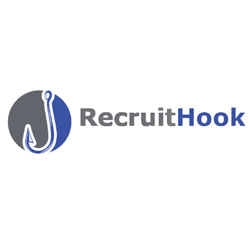It’s a fact: With more employees working from home due to COVID-19, more employers are keeping an eye on them through the use of remote employee monitoring tools. Last April, only 16% of employers reported using tracking technologies to monitor workers at home, according to a study by Gartner. In June, that number spiked to 26%.
“There’s no question that some employers are switching up the rules when it comes to surveilling employees,” says William I. Greenbaum, an attorney at Santomassimo Davis LLP, a specialty law firm that offers the Outside General Counsel™ solution, a fully outsourced virtual legal department and support staff to companies for a fixed monthly fee.
But before jumping onto the surveillance bandwagon, Greenbaum, who heads up the firm’s employment practice, warns employers to weigh the benefits against the legal risks. Here are four things to take into account before spying on remote workers:
Transparency is key.
Whether you’re monitoring employees’ keystrokes, reviewing emails or web activity or tracking their locations, “you must do it in an informed way,” says Greenbaum. Such monitoring is subject to a number of federal and state laws that dictate when employees must be notified they are being surveilled. From a legal perspective, “being upfront with employees is the smartest tactic,” Greenbaum says. In addition, work with your legal partner and HR team to include provisions in the employee handbook that explain how surveillance might be used and that monitoring can occur at any time, for any reason, without notice.
Only monitor company-owned equipment.
Many remote employees complete their work on personally owned computers and cell phones. If this is the case, don’t expect to install monitoring tools on these devices. “Employees have a reasonable expectation of privacy when they’re using their own technologies,” Greenbaum says. A safer solution: “If you need to surveil, employees should be required to use company-supplied equipment.”
Create rules to guide at-home behavior.
Off-limits behaviors, like the use of alcohol or drugs, are more difficult to police at home. “As an employer, you’re not going to walk into somebody’s residence and say, ‘I’m here to check whether you’re working under the influence,’” Greenbaum says. Employees should be warned that certain behaviors are still prohibited while working remotely. “If somebody’s on a Zoom call and they’re noticeably under the influence, they need to know the rules still apply,” he says. Companies without such policies run the risk of a discrimination claim. “You need to have standards you apply across the board to show you’re not acting on a subjective basis,” Greenbaum warns. Your legal partner can help add language to the company handbook to cover the behaviors of remote workers.
Don’t switch up the rules.
Tempting as it may be to implement monitoring to protect productivity, it could do more harm than good. According to a recent study by the Chartered Institute of Personnel and Development, a whopping 79% of workers feel that introducing technologies to monitor the workplace would damage trust between them and their employers. Greenbaum believes employers who haven’t used monitoring in the past should be hesitant to implement it now. ”I don’t think it’s fair to employees if you suddenly change the rules of engagement,” he says. “It shows a lack of fundamental respect. If you trusted employees while they were in the office, you should trust them while they’re working from home.”









Comments are closed